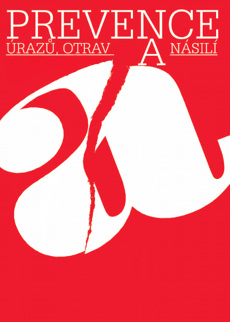SENIOR VERZUS AGEIZMUS
SENIOR VERSUS AGEISM
Anna Hudáková1, Dagmar Magurová1, Darina Mudríková2
1Fakulta zdravotníckych odborov Prešovskej univerzity v Prešove; 2Vysokošpecializovaný odborný ústav geriatrický sv. Lukáša v Košiciach n. o.
Korespondenční autor: Anna Hudáková (aahudak@gmail.com)
ISSN 1804-7858 (On-line)
Full verze:
Submitted:15. 4. 2011
Accepted: 29. 11. 2011
Published online: 20. 12. 2011
Summary
The growth of the senior population also involves a discrimination of elderly people. World organizations deal with these problems with establishing tools for the diagnostics of the misuse of seniors. Bad treatment of seniors is characterized by a complex of violence or active insufficiency of taking care of a senior person. This may be manifested in physical or mental ways with a transition to the form of the negligence, misuse or cruelty. In addition to known programmes of protecting the seniors and to foreign studies, we offer possibilities of the emotional support of seniors.
Keywords: senior – ageism – care – negligence – protection of elderly people
Souhrn
S nárastom populácie starších zaznamenávame aj ich diskrimináciu. Zaoberajú sa ňou svetové organizácie a vytvárajú nástroje pre diagnostiku zneužívania starších. Zlé zaobchádzanie so seniorom je charakterizované komplexom násilia alebo aktívnej nedostatočnej starostlivosti o jeho osobu. Môže sa prejavovať fyzickým či psychickým spôsobom a prechádza do formy zanedbávania, zneužívania alebo týrania. Okrem známych programov ochrany starších a zahraničných štúdií ponúkame možnosti emocionálnej podpory seniorov.
Klíčová slova: senior – ageizmus – starostlivosť – zanedbávanie – ochrana starších osôb
Literatura
1. Abrams WB et al. (1995). Merck manual of geriatrics, 2nd ed., Merck and Co., INC., kapitola 17: 224–235.
2. Balková D a kol. (2006). Gerontologické ošetrovateľstvo. Prešov: Prešovská univerzita, Fakulta zdravotníctva, 91 p.
3. Balogová B (2006). Osamelosť ako dôsledok ageizmu a násilia na senioroch. In: Zborník referátov: Psychosociálne a zdravotné aspekty nekvality života. [online]. p. 62 [cit.2009–01–05]. Dostupné z: http://www.ff.unipo.sk/…ad/index.htm
4. Breemen P (2005). Duchovná cesta k starnutiu. Bratislava: Don Bosco, 77 p.
5. Ertel K, Glymour M, Berkman L (2008). Effects of social integration on preserving memory function in a nationally representative US elderly population. American Journal of Public Hesly. 98: 1215–1220.
6. Fulmer T, Guadagno L, Dyer CB, Connolly MT (2004). Progress in doder abuse screening and assessment instruments. Journal of the American Geriatrics. Society. 52: 297–304.
7. Haškovcová H (2002). Lékařská etika. Praha: Galén, 272 p.
8. Hwalek M, Sengstock M (1986). Assessing the probability of abuse of the elderly: Toward the development of a clinical screening instrument. Journal of Applied Gerontology. 5: 153–173.
9. Kalvach Z a kol. (2004). Geriatrie a gerontógie. 1. vyd., Praha: Grada Publishing, 861 p.
10. Kořenek J (2002). Lékařská etika. Praha: Triton, 276 p.
11. Koval Š (2001a). Antropologický rozmer epidemiológie staroby. Košice: PonT, s. r. o., 176 p.
12. Koval Š (2001b). Týranie starých ľudí. Košice: Posit s. r. o., 182 p.
13. MISSING VOICES: Views of older person on elder abuse, WHO Press, Ženeva. 2002.
14. NCEA (2006). NATIONAL CENTER ON ELDER ABUSE. The 2004 survey of state adult protective services: Abuse of adults 60 years of age and older. Washington, DC: Author. National Center on Elder Abuse, American Public Human Services Association, and Westat, Inc. (1998). The National Elder Abuse Incidence Study. Washington, DC: National Aging Information Center.
15. NRC (2003). NATIONAL RESEARCH COUNCIL. Elder mistreatment: Abuse, neglect, and exploitation in an aging America. In Bonnie RJ, Wallace RB (eds.): Panel to review risk and prevalence of elder abuse and neglect. Committee on National Statistics and Committee on Laws and Justice, Division of Behavioral and Social Sciences and Education. Washington, DC: National Academies Press.
16. Palát M (2003). Ageizmus a súčasnosť. Revue medicíny v praxi. 1/4: 33.
17. Palmore E (1981). The Facts on Aging Quiz: Part two. The Gerontologist, 21: 431–437.
18. Piscová M (2007). Aktívna staroba: želanie alebo realita? Forum. Scientiae et Sapientiae. XIV/1: 40–41.
19. Poledníková Ľ a kol. (2006). Geriatrické a gerontologické ošetrovateľstvo. Martin: Osveta, 216 p.
20. Reis M, Nahmiash D (1998). Validation ofthe indicators of abuse (IOA) screen. Gerontologist. 38: 471–80.
21. Tonks A (1999). Elder abuse. BMJ. British Medical Journal. 318/7179: 278.
22. Topinková E (2005). Geriatrie pro praxi. Praha: Galén, 270 p.
23. Vaňo I, Királová A (2008). Starnutie populácie ako výzva pre spoločnosť v súčasnosti. vyd. Bratislava: Slovenská komora sestier a pôrodných asistentiek. Ošetrovateľstvo a pôrodná asistencia. VI/4: 9–10.
24. Vidovičová L., Rabušic, L (2005). Věková diskriminace – ageismus. úvod do teorie a výskyt diskriminačních přístupů ve vybraných oblastech s důrazem na pracovní trh. Praha, Brno: VÚPSV, 2005. 54 p. Výzkumné zprávy.
